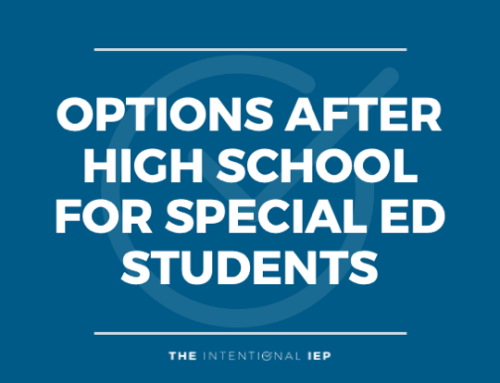It is never easy being a first-year teacher. There is so much to learn, so much to experience, and so much to do. For first-year special ed teachers, one of the most daunting tasks is writing those first IEPs.
While colleges do their best to prepare future teachers to write them, there is nothing like being in the school and having to write an IEP alone. Thankfully, there are resources and tips to make it easier.
Tips for IEP Writing for First Year Teachers
1 – Ask for Help
Everyone was a first-year teacher at one point and they know the challenges associated with writing those first IEPs. Do not be afraid to reach out to colleagues and supervisors for support if you need guidance. Asking for help is not a sign of weakness, but of strength and being self-aware.
Samples of IEPs that your co-workers have written can also be a good resource as it gives you a clear picture of what your district expects.
2 – Use Your School or District’s Forms
Many schools and districts have their own IEP templates and form that teachers are required to use. Be sure to get a copy of them before attempting to re-create the wheel only to find out you need to redo everything on the district’s forms.
Here is a short snippet from one of the trainings inside of TII membership about having an organized IEP process:
If you are looking for more specifics on IEP’s like writing IEP goals and behavior plans – you’re in the right place!
By joining the membership, individuals also gain access to an extensive library of over 13,000 pre-written IEP goals, empowering them with a wealth of options to support their students’ unique needs.
Learn more and become a member of The Intentional IEP today!
3 – Use a Checklist for the Entire Process
From collecting data to observations to setting up the IEP meeting, use a checklist to track what needs to be done and when. Not only does it make it easier to write the IEP because you will have the information you need, but it also helps you stay organized.
Not sure where to start? The IEP Toolkit has everything you need – including an IEP Writing Timeline, present level templates, lists of accommodations and modifications, and more! It also includes guides and forms for holding a successful IEP meeting. It’s a special ed teacher must-have!
4 – Understand Current Goals and Present Levels
Before you can write a new IEP, you need to have a firm understanding of the previous IEP and the student’s progress. Review the current goals and assess the student’s present levels to see where he is ready to make progress. Use the current IEP as the backbone for the new one that you are writing.
Making sure the proper language is used when writing a Present Level can be challenging, but when you join The Intentional IEP, you will have access to these resources to make writing present levels that much easier! Join here, or click the image above.
5 – Communicate with Parents

Making parents feel like they are part of the IEP team and that you are all working together for the good of the child goes a long way toward establishing great relationships with your students’ families.
For more on how to help parents advocate at an IEP meeting, read on here.
It’s important to always keep a log of your contact with a parent. Get this Parent Contact Log template when you join The Intentional IEP here or by clicking the image above.
Above all else, remember that the document you are writing is about a child. It is easy to get lost in the data and the jargon of special education and forget that at the heart of the IEP is a student who needs your help and guidance. Writing an IEP is never an easy task, but when done well, it can change a child’s future forever.
If you struggle with writing IEP goals and objectives, The Intentional IEP is here to help you. The Vault is a growing IEP goal bank with over 12,000+ prewritten IEP goals, each written by a certified special education teacher on the TII Team. The IEP goals span 40 domains across all grade levels and subjects.
Want to take a look inside? Let me show you.








